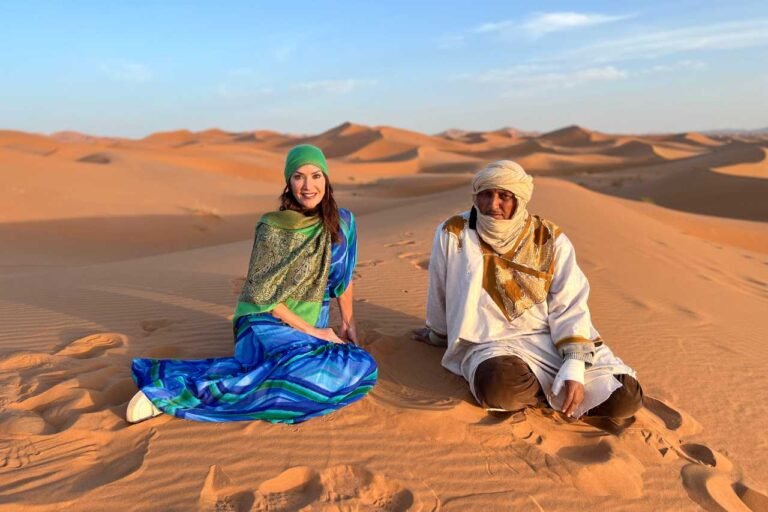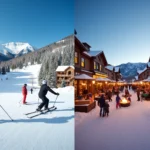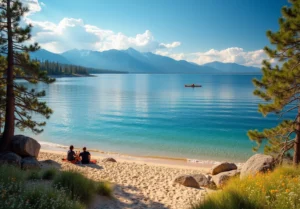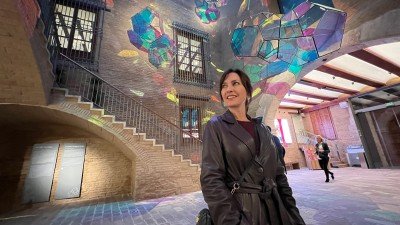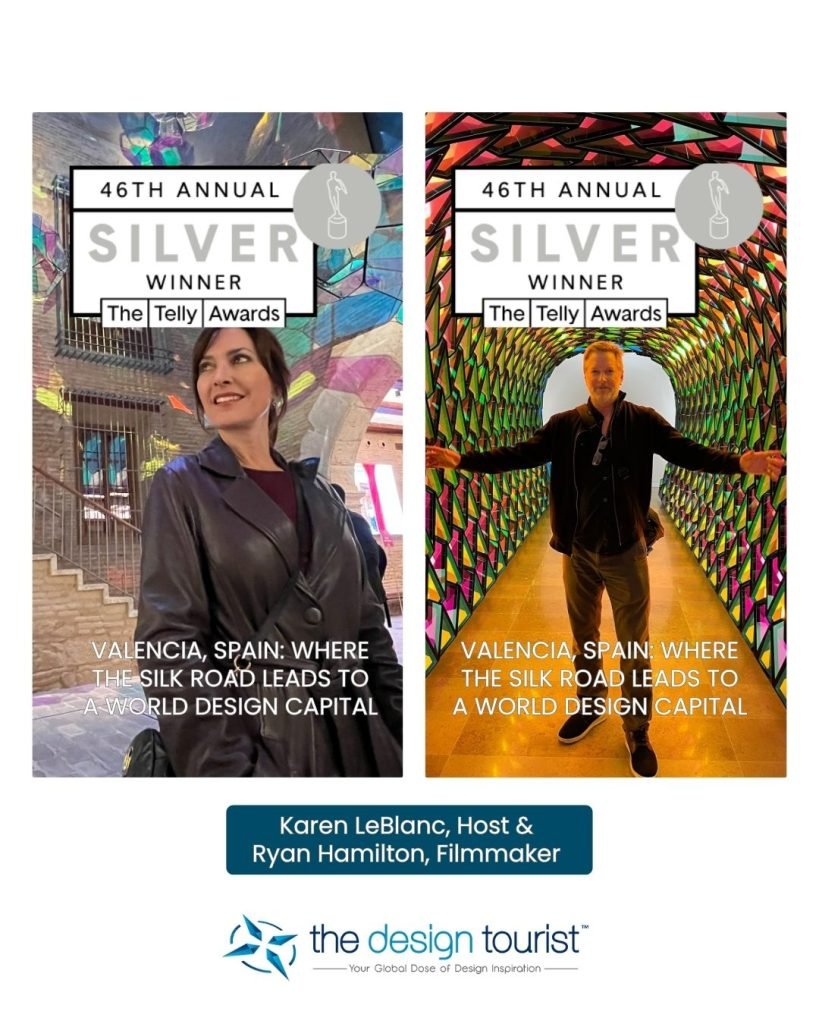This post may contain affiliate links, which means I may earn a small commission from purchased products at no additional cost to you. See my full disclosure here.
Morocco tells its story through color. In Marrakech, the red clay walls glowed pink as the late sun brushed the medina. The Dades Valley carried the scent of soft pink roses, and in the Sahara, the dunes turned gold under a sky that seemed endless. Every stop on my journey revealed another shade of the country’s heritage, stitched together into one seamless experience.
What made the trip effortless was not just the destinations themselves. It was the way each moment connected, allowing me to fully immerse in Morocco’s culture without the stress of managing the logistics.
Marrakech: Immersing in the Red City
Inside Marrakech’s old city, life pressed in from every side. Narrow alleys wound between red clay walls, filled with the sounds of bargaining, the scent of spices, and the movement of motorbikes weaving past donkey carts. Shopkeepers splashed water across their thresholds to hold down the dust while the hum of the Medina wrapped itself around me.
Jemaa el-Fnaa Square
At the center of it all was Jemaa el-Fnaa, alive with energy day and night. In the morning, I passed juice vendors and spice stalls stacked high in pyramids of color. When evening came, the square shifted as lanterns lit the food stands, the smoke of grilled meats drifted through the air, and the sound of drums and voices rose over the crowd. Standing there, I let the square pull me into its rhythm.
Where to Stay in Medina: Riad Pachavana
In the heart of the medina, I stayed at Riad Pachavana, a traditional Moroccan guesthouse just a short walk from the square. Its courtyard opened under carved arches and tiled walls, and a rooftop terrace overlooked the medina rooftops.
Each morning, I stood there with mint tea in hand as the city stirred awake beneath me. The riad was more than a place to stay. It became part of the experience.
Markets and Craftsmanship
Exploring the Souks
The souks of Marrakech were a maze of sound and color. One alley smelled of sun-dried leather while another rang with the hammering of brass lanterns.

Carpets in every shade of red and blue hung like woven paintings, and pottery glistened in rows of intricate designs.

In the tanneries, animal hides dried in the open air while vats of natural dye turned the ground into a patchwork of deep yellows and rich reds.
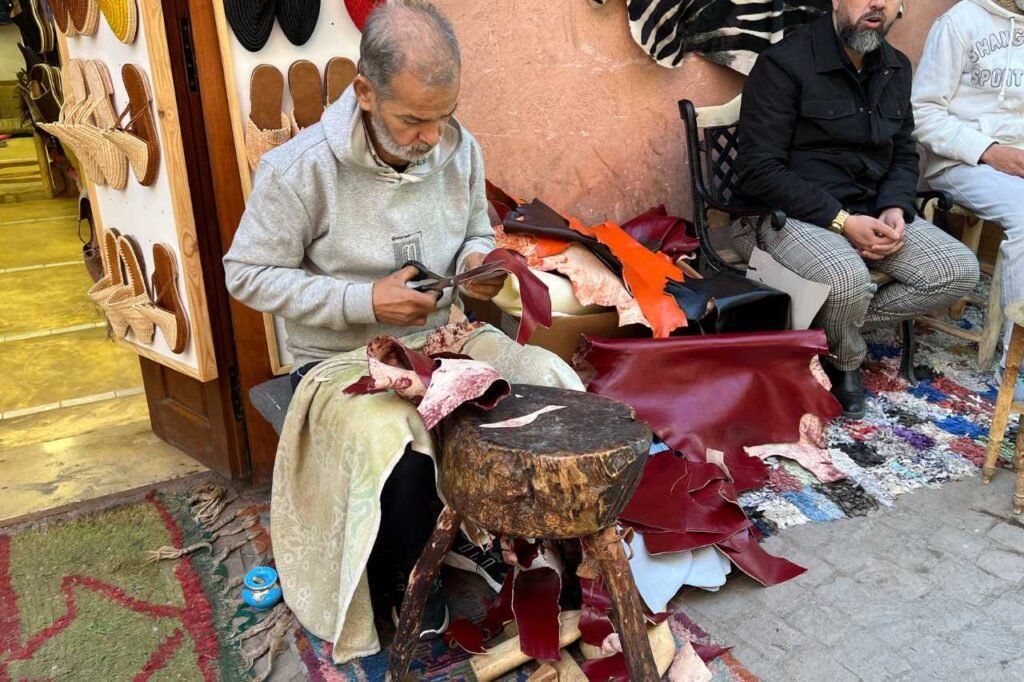
Watching artisans work entirely by hand was a window into a craft that has endured for centuries.
Hay Elmellah
In Hay Elmellah, the old Jewish Quarter, the pace slowed. Spice markets lined narrow lanes with baskets of saffron, cumin, and turmeric, their colors bright against the muted walls. The quarter carried centuries of history in its stones.
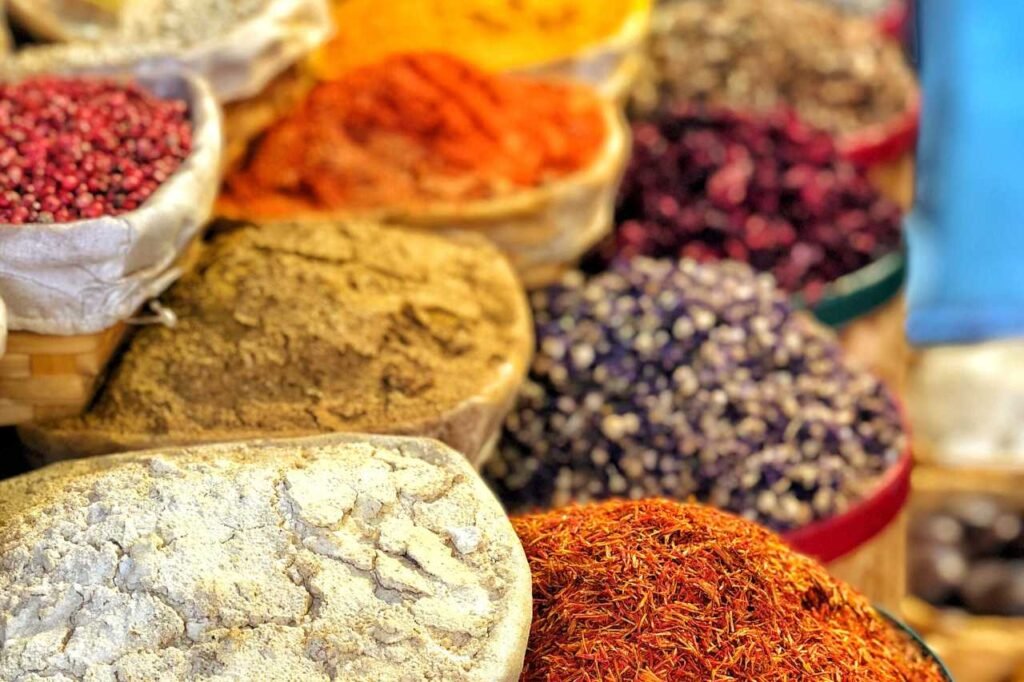
Bahia Palace and Zellij Artistry
Inside Bahia Palace, the medina’s noise melted into cool, quiet courtyards. Walls and floors were covered in hand-cut zellij mosaics that formed precise, geometric patterns.
Carved cedar ceilings and marble-paved courtyards spoke of time and patience. Standing in the main hall, I let the details pull me into Morocco’s long tradition of craftsmanship.
Koutoubia Mosque
The minaret of the Koutoubia Mosque rose above the medina as a constant landmark. At sunset, the call to prayer echoed across the city, and the bustling streets seemed to pause for a moment.
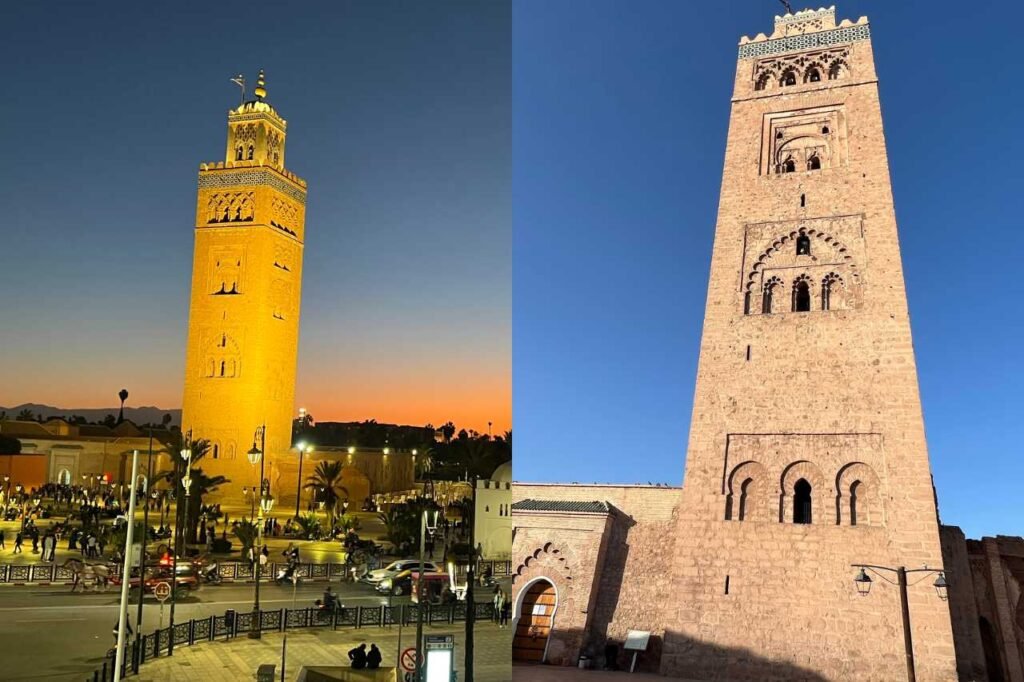
My guide told the story of the original mosque’s misaligned foundation and how a second one was built next to it, perfectly aligned to Mecca. It was a small correction that has stood for centuries.
Majorelle Garden and Le Jardin Secret
Majorelle Garden and YSL Museum
After the medina’s intensity, the Majorelle Garden felt like stepping into a living painting. Cobalt blue walls framed green palms and fountains, a vision created by Jacques Majorelle and later saved by Yves Saint Laurent. The YSL Museum next door traced how Marrakech influenced the designer’s work and legacy.
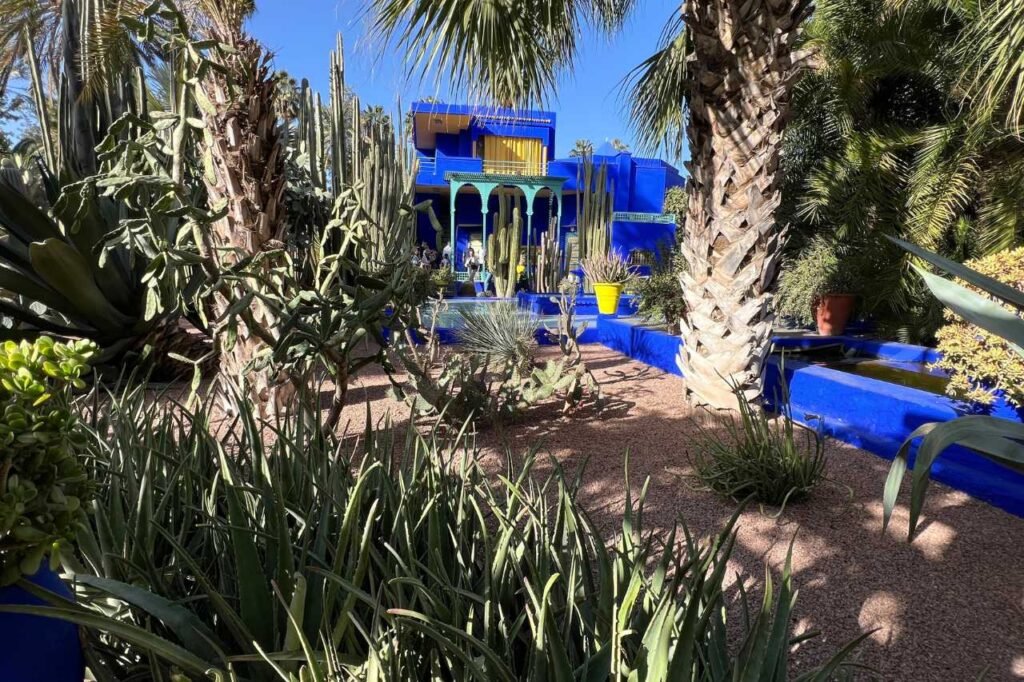
Le Jardin Secret
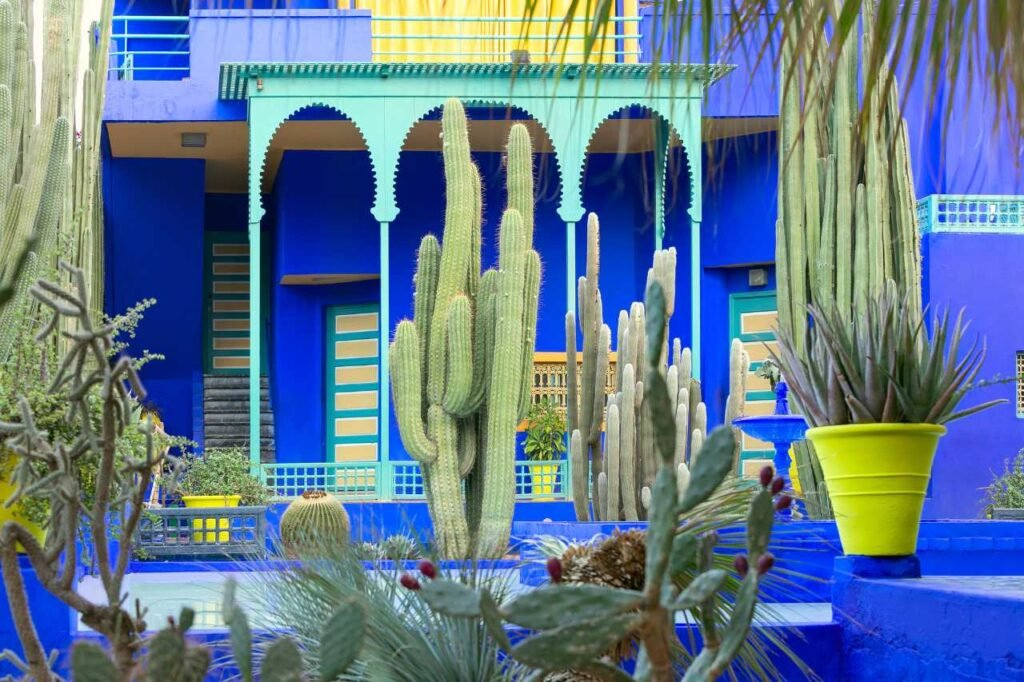
Hidden inside the medina, Le Jardin Secret offered Islamic gardens and restored palace rooms that carried a calm dignity, a quiet balance to the city’s bustle outside its walls.
Into the Atlas Mountains and Ourika Valley
The Road to Setti Fatma Waterfalls
Leaving Marrakech, the road climbed into the Atlas Mountains. In less than two hours, the energy of the city gave way to terraced Berber villages and cool mountain air.
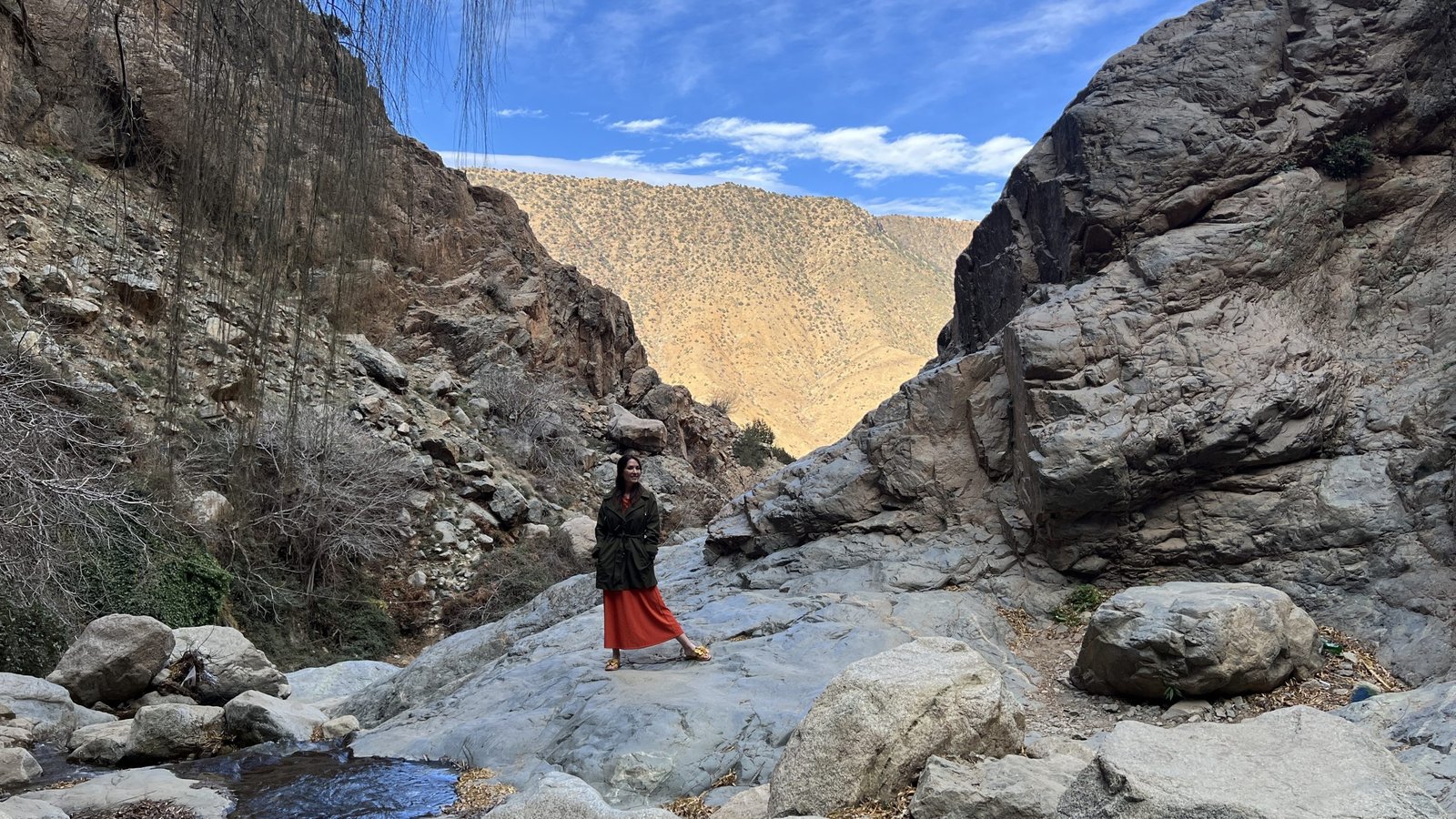
The Ourika Valley unfolded along the river, with cafés perched close to the water and mud-brick homes rising from the hills.
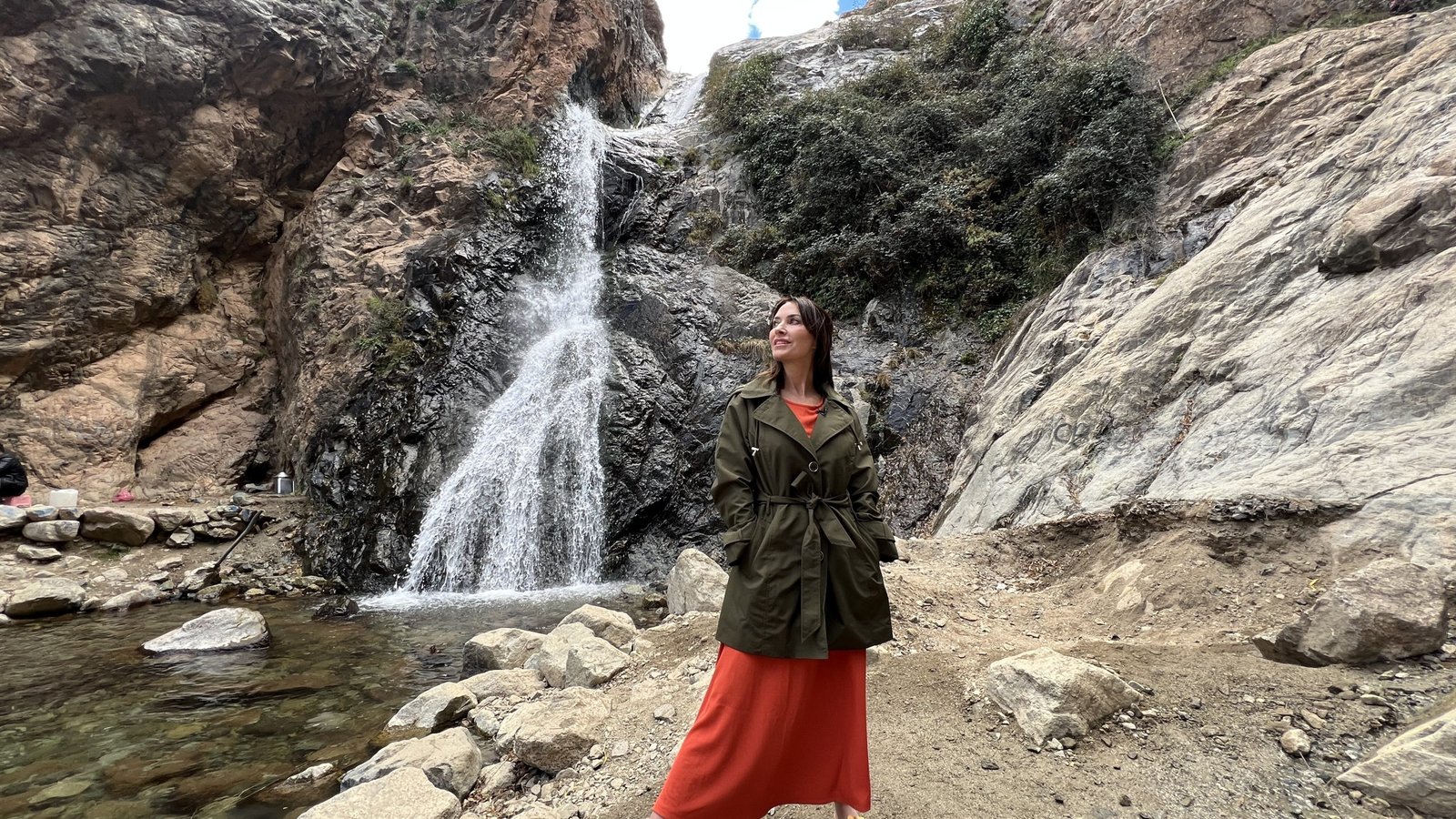
A local Berber guide led me on a hike to the Setti Fatma Waterfalls, calling “Yalla!” as we followed winding trails past small shops. At the base of the falls, we paused at a cliffside café, sipping mint tea with the sound of rushing water around us.
Tafza Pottery Village
On the way, I stopped in Tafza, a village known for Berber pottery. Inside a simple workshop, artisans shaped clay on foot-powered wheels and fired their work in open-air kilns. Watching the slow, deliberate process felt like seeing the earth itself turn into culture.
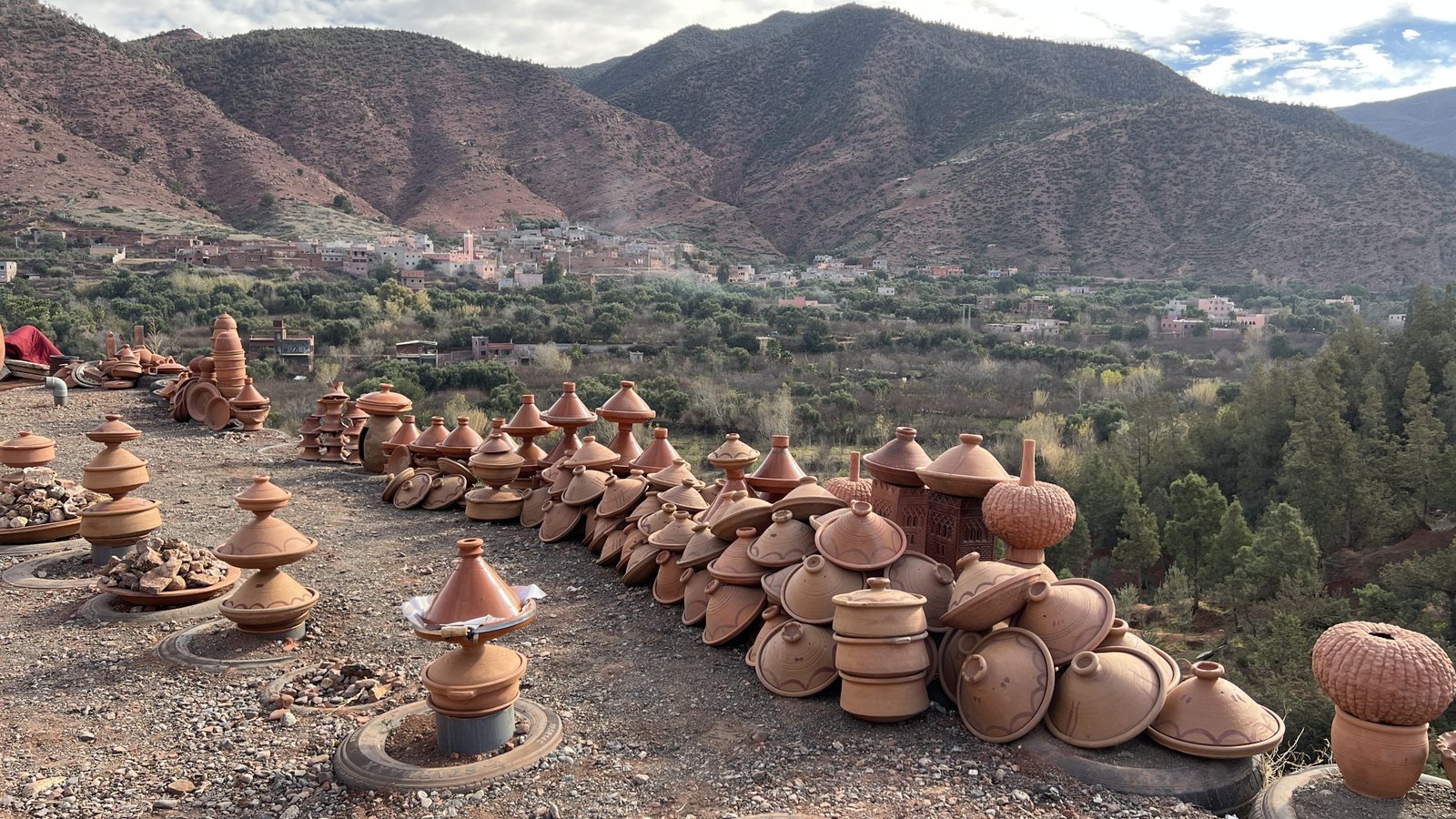
Dar Zite: Argan Oil and Berber Livelihoods
In Sti Fadma, I visited Dar Zite, a women’s cooperative producing argan oil. Inside, women sat cracking and grinding nuts by hand, explaining the work that goes into every small bottle.
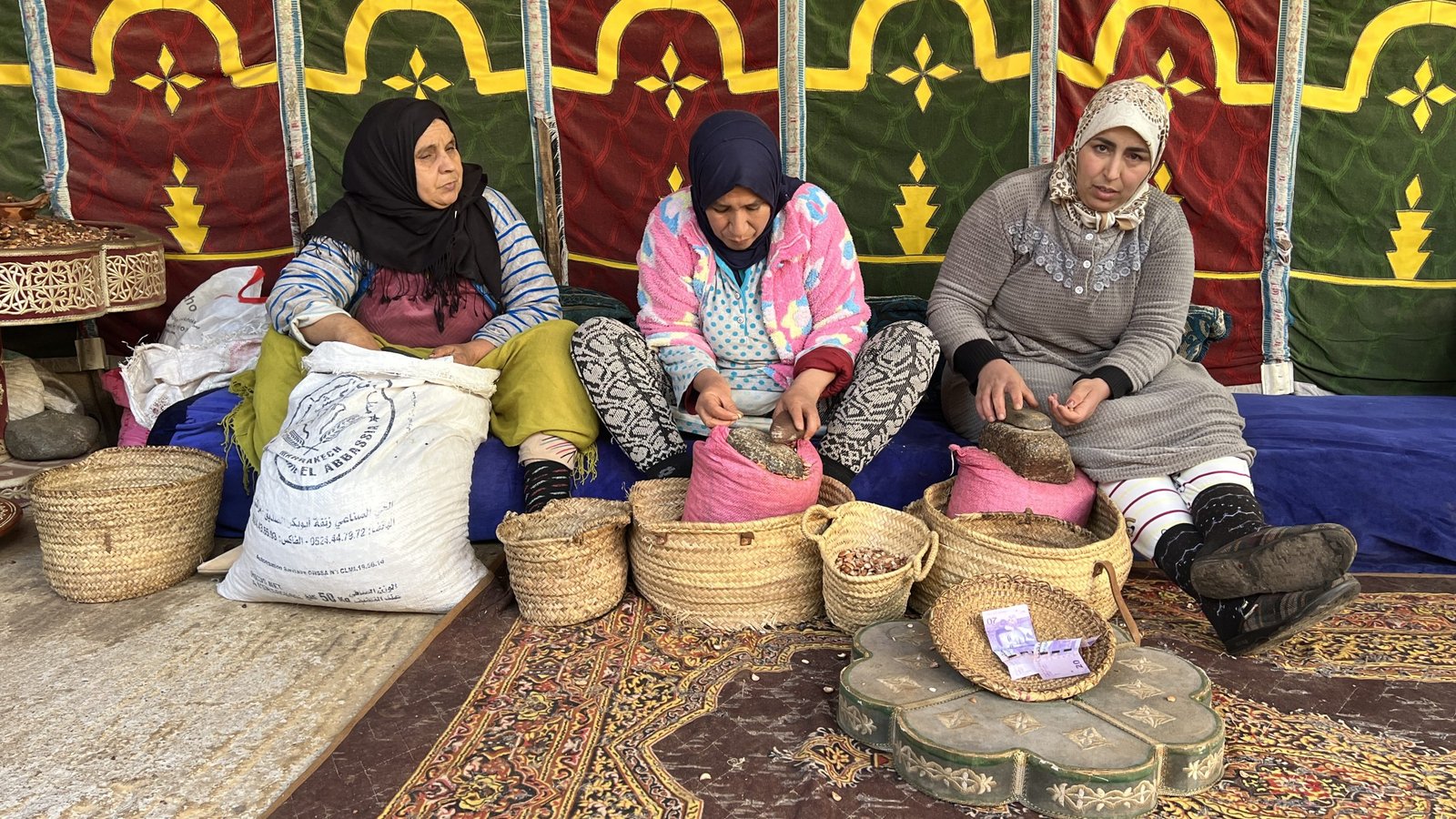
Many of them were widowed or divorced, and this income supported their families. Sharing tea in their workspace, I learned not just about argan oil but about the community it sustains.
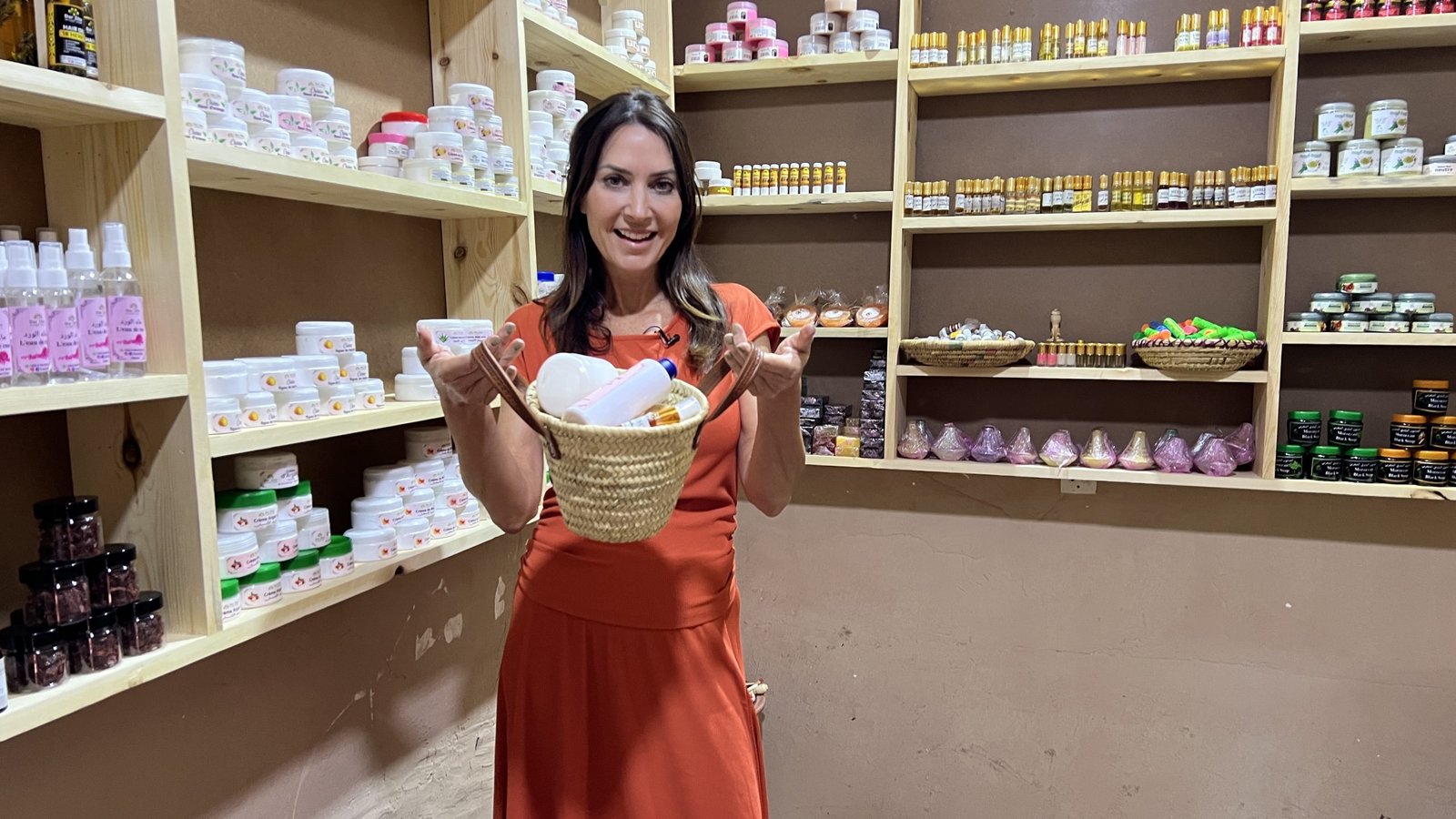
In the Ourika Valley, Berber families live from the land, cultivating argan nuts, olives, and goat milk. These traditions are not only economic. They are cultural threads woven into everyday life.
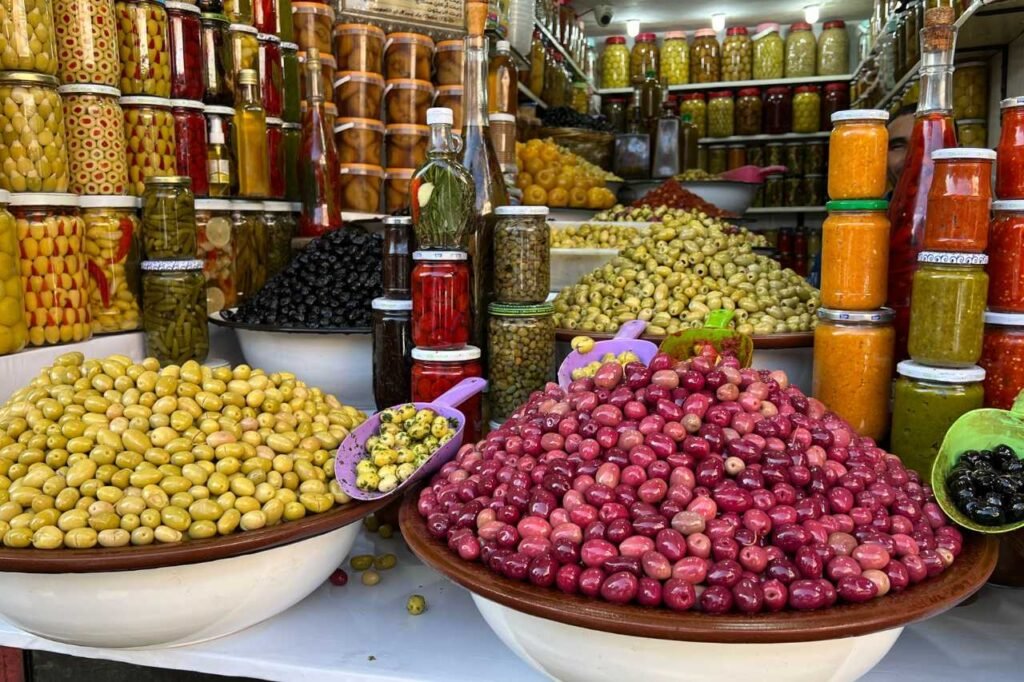
Valley of Roses
Driving into Kelaat M’Gouna, the “City of Roses,” I smelled the Damask roses long before the fields came into view. Even outside harvest season, the scent hung in the air.
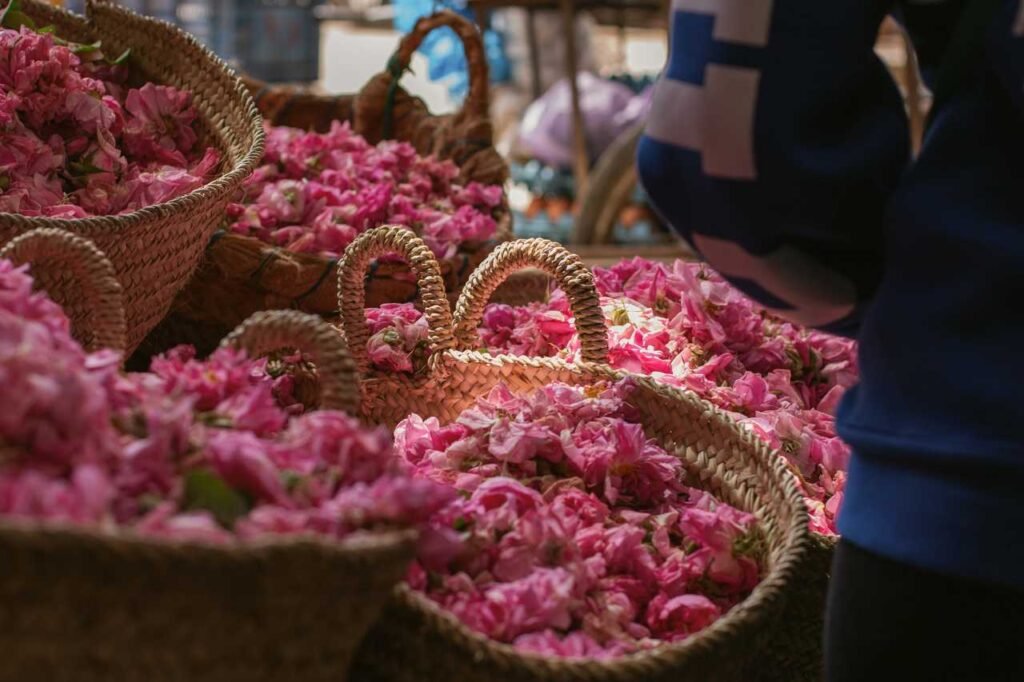
Shops along the road sold rosewater and oils, each bottle carrying the valley’s fragrance and history.
Dades and Todra Gorges
Scenic Drives and Stone Walls
The road into the Dades Valley curled between dramatic cliffs before opening into sweeping views.
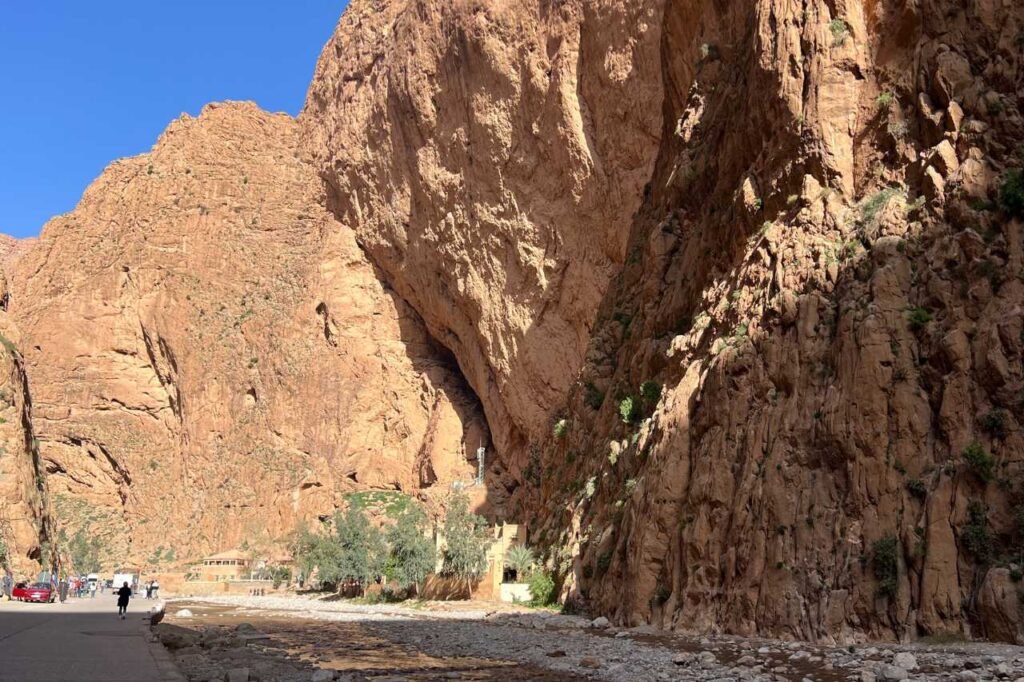
Further east, Todra Gorge narrowed into a towering corridor of stone, just 33 feet wide in some places, the walls rising so high they stopped me mid-step just to look up.
Berber Carpet Making
In Tinerhir, a Berber family welcomed me into their home to show how carpets are woven. Each pattern held tribal stories and cultural symbols passed down through generations.
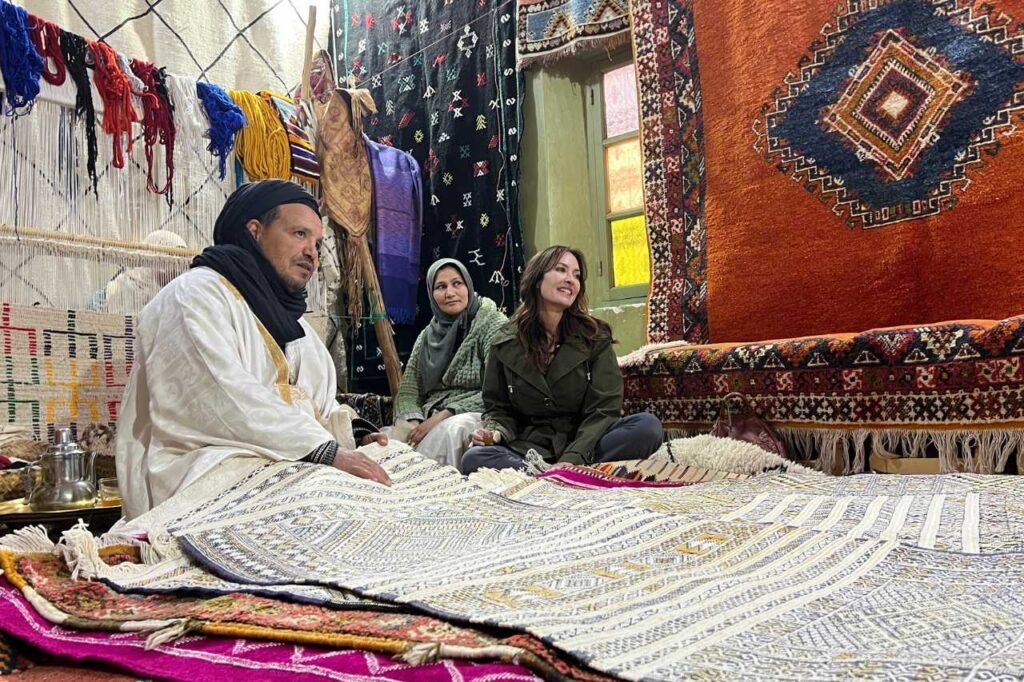
Watching the loom move in steady rhythm made it clear that these rugs are more than decoration. They are pieces of living heritage.
Where to Stay: Riad Stars Dades
That evening, I stayed at Riad Stars Dades, a calm retreat after the winding mountain roads. Its courtyard glowed softly at dusk, offering a moment of quiet before the desert ahead.
Aït Benhaddou and Ouarzazate
Aït Benhaddou rose from the earth like a clay memory. The UNESCO-listed ksar carried centuries of trade history within its earthen walls. In Ouarzazate, the “Gateway to the Sahara,” caravan routes met film history, a threshold where the desert begins.
The Sahara: Merzouga and Erg Chebbi
Sunset Camel Trek
Arriving in Merzouga, the dunes of Erg Chebbi rolled out in waves of gold. Riding a camel into the sunset, the noise of the world fell away until there was only wind and the soft shift of sand underfoot.
Where to Stay: Riad Kasbah Aiour
That night at Riad Kasbah Aiour, my luxury desert camp, I lay back under a sky thick with stars. With no city lights to dim them, the constellations felt impossibly close. The quiet of the Sahara was unlike anything else. Vast, still, and timeless.
Moroccan Cuisine and Rituals
Tagine and Tea
Every meal told a story. Tagines simmered slowly with layers of spice, couscous appeared on Fridays as a weekly tradition, and mint tea poured high into small glasses carried the warmth of Moroccan hospitality.
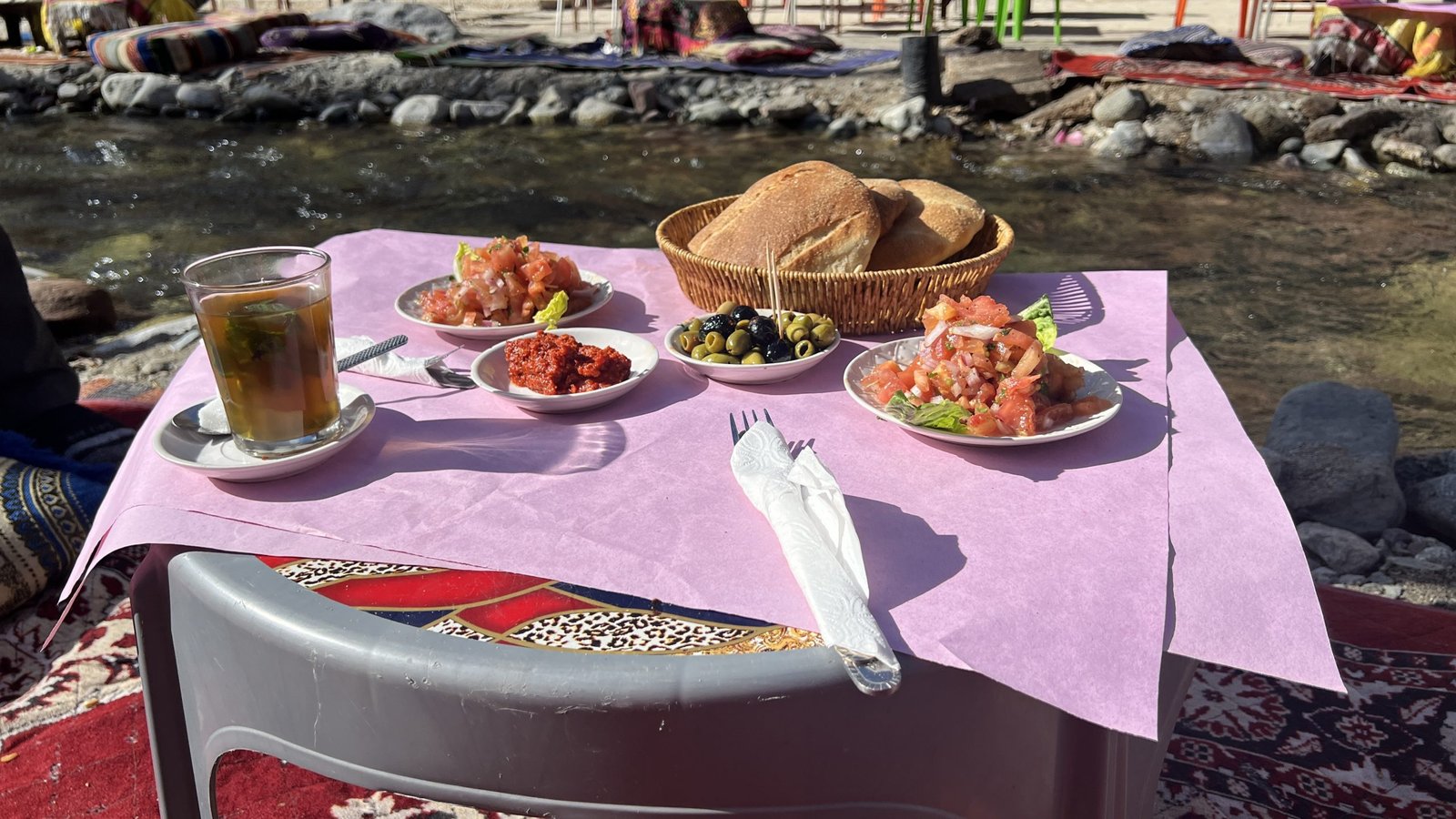
Dining riverside in the Ourika Valley, sitting on cushions at a low table while a waiter crossed a footbridge with steaming dishes, felt like culture served alongside food.
Hammam Traditions
At Dar Zite, stepping into a traditional hammam revealed another part of Moroccan life. Learning how argan nut shells fuel the steam baths and serve as exfoliants showed how ritual and resourcefulness meet in this weekly practice of cleansing and connection.
Plan Your Seamless Morocco Journey with Saharies Morocco
Traveling through Morocco is as much about the experience as it is about the destinations, and having the right team behind the trip made all the difference. My journey was arranged with Saharies Morocco, a company that creates private tours designed to immerse you in the culture while making travel seamless.

They handled everything from reliable transportation to local English-speaking guides who knew each city’s history and hidden corners. What stood out most was their knowledge of traditional riads and boutique stays that reflected the character of every region we visited. Each stop felt carefully chosen to offer a sense of place, not just a place to sleep.
If you want your own Morocco trip to feel personal and well-planned, Saharies Morocco can craft an itinerary that covers everything from vibrant medinas to quiet mountain villages and the vast Sahara. Their attention to cultural detail and local expertise makes the country easier to navigate and far more rewarding to experience.
Final Thoughts
Morocco stays with you in contrasts. The hum of a medina against the stillness of the desert, the scent of spices and the patience of an artisan’s hands, the vibrant colors and the calm spaces between them.
To experience Morocco in a way that is both memorable and seamless, it is not just about where you go but how the journey is woven together. With the right hands guiding the path, Morocco opens not as a checklist but as a story you will carry long after you leave.
Read More Travel Guide and Tips for Morocco
Ultimate Guide to Exploring Morocco: Discover the Wonders of the Sahara








